
Purple coneflowers (echinacea purpurea) are one of my absolute favorite plants in my native garden.
They are extremely adaptable, resilient and drought-tolerant, and bloom over a long period from summer into fall.
A Look at Growing Purple Coneflower in All Seasons
And they’re truly an “all-season” interest perennial because they typically emerge relatively early when many other summer perennials are still dormant.
And on the other end of the spectrum, their stalks add height and interest to the winter garden and their seedheads also provide food and fuel to birds like the goldfinch.
So although purple coneflowers aren’t a spring bloomer like your favorite woodland ephemerals, if you like to see lots of green in your spring garden from the very first warm days, coneflowers are a great plant to go with!
There are a few different varieties and cultivars of purple coneflower. The “magnus” cultivar is the one that is typically most readily available at garden centers, and there are others with various flower differences including white.
The magnus variety is not much changed in terms of leaves or flowers so it’s still a good choice for wildlife, for bees and other pollinators as well as lepidoptera host plant activity. In fact, the Mt. Cuba Center did extensive trials of echinacea including its many cultivars, and for the most part found that the most common cultivars are comparable to the straight species, although there are some reasons why you might still opt to avoid them.
Either way, the straight species is still so beautiful and is still such a low-maintenance adaptable plant so that’s what I tend to prefer to go with, for both aesthetic and ecosystem reasons.
Other echinacea varieties you might consider that are native to many of the same regions, but also include other states where purpurea are not, are echinacea pallida (pale purple coneflower) and echinacea angustifolia (narrow-leaved purple coneflower).
Echinacea (Coneflower) Leaves Emerging in Spring
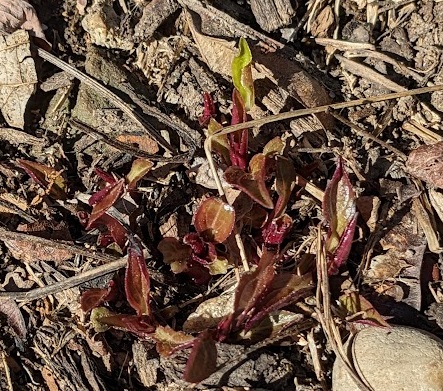
In my garden (SW Ohio, Zone 6A), my echinacea emerges from the ground in early March, which is when the above image was taken. Some have purple leaves right at the beginning when they emerge (I think mainly the magnus cultivar), but they quickly turn green.
Echinacea (Coneflower) Budding and Blooming in Summer
Coneflowers are a delight to watch bud and eventually bloom into the iconic wildflower that we know and love.
Gardeners who are wary of pests and diseases might ask questions when they see a green and yellow center and petals unfurling, but this is totally normal for echinacea and will change color soon.
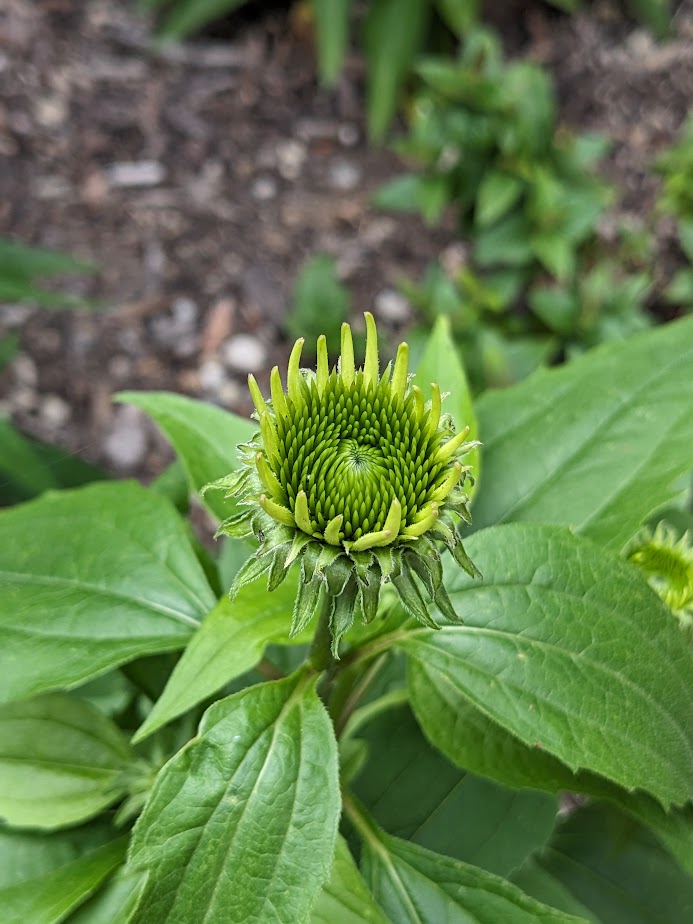
The next photo does a good job of showing echinacea purpurea flowers at three different stages of opening
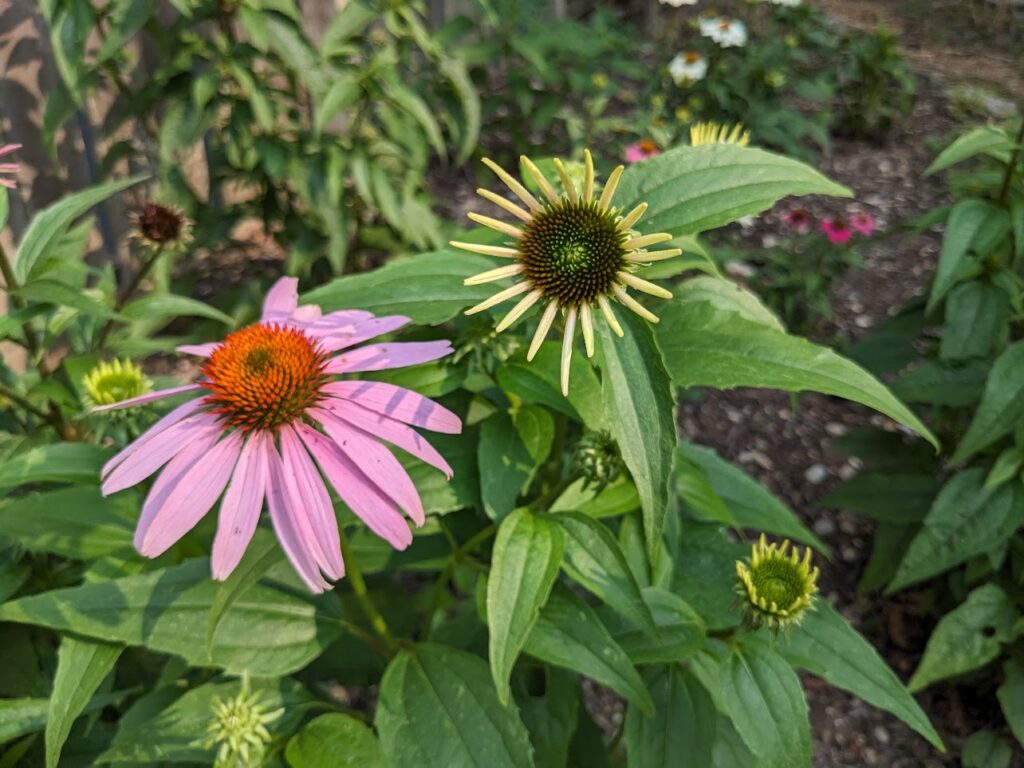
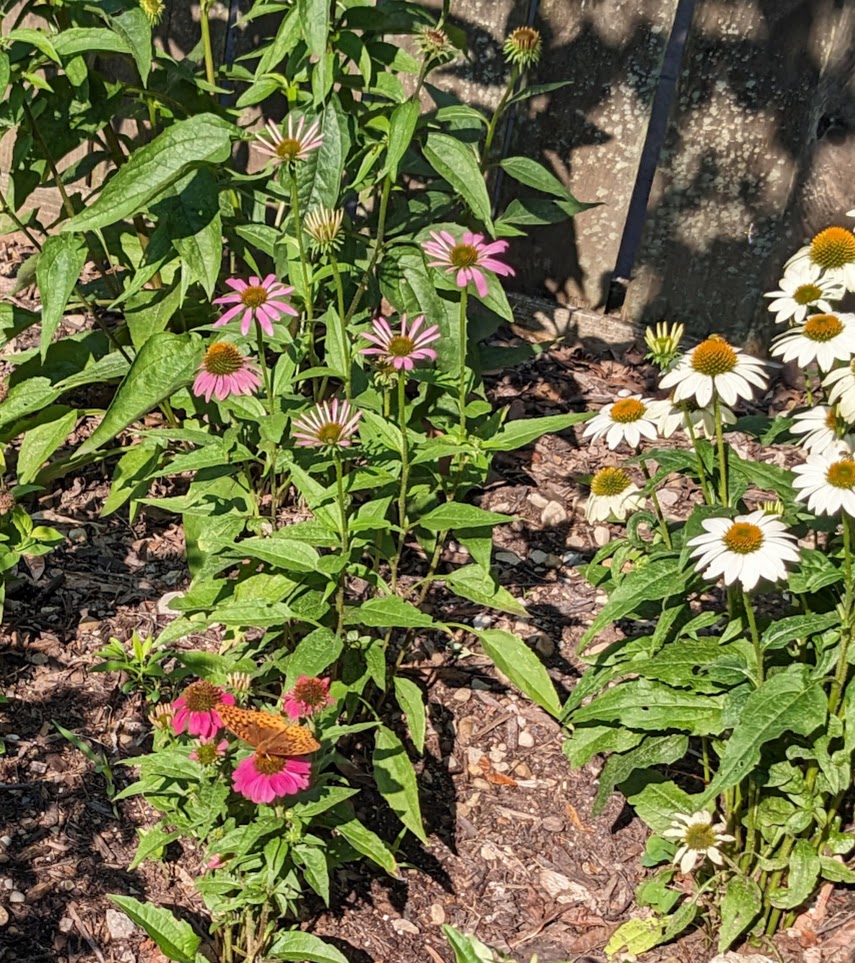

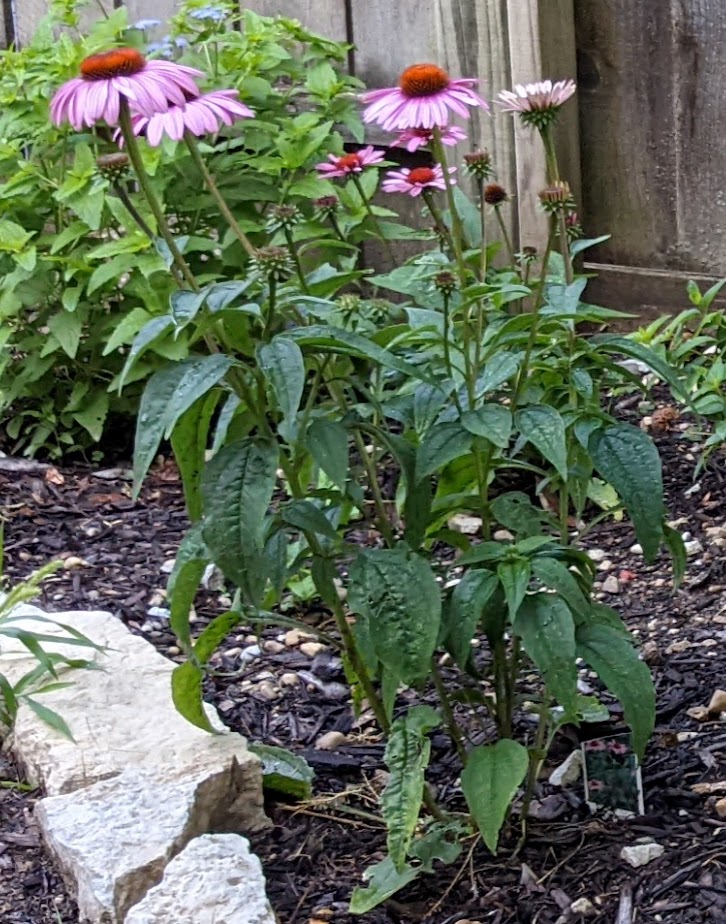
What If My Echinacea Flowers Look Weird?
In some cases, however, the flowers still look a little strange or deformed. The most common ailment for echinacea is a type of mite in the eriophyid family known as the coneflower rosette mite. These mites cause damage to the flowers, in particular parts that stick up in the middle.
A mild example of that is below:
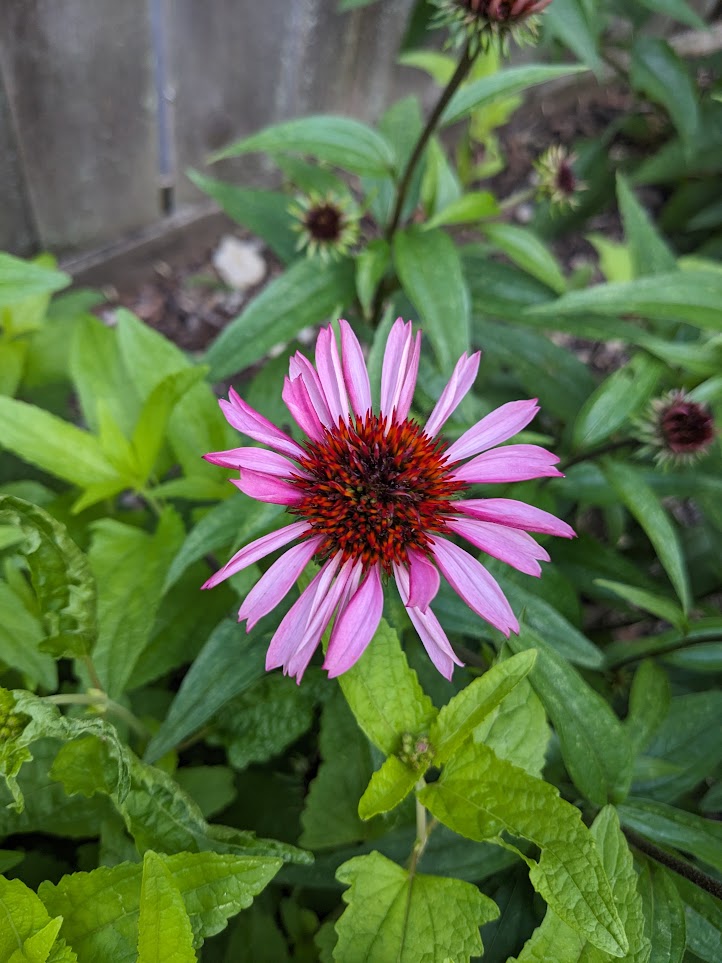
This damage is mostly cosmetic and limited to the flowers, so if you have a flower that looks like this, it’s a good idea to cut and trash (not compost) affected flowers so that the mite populations decrease and have less chance of returning the following year.
There is a much more damaging disease known as aster yellows that can also affect coneflowers. This will typically involve phyllody (where deformed leaves emerge directly from the flower) and the plant as a whole will look stunted and sickly.
Read our article on aster yellows for more on making this diagnosis.
Leave a Reply